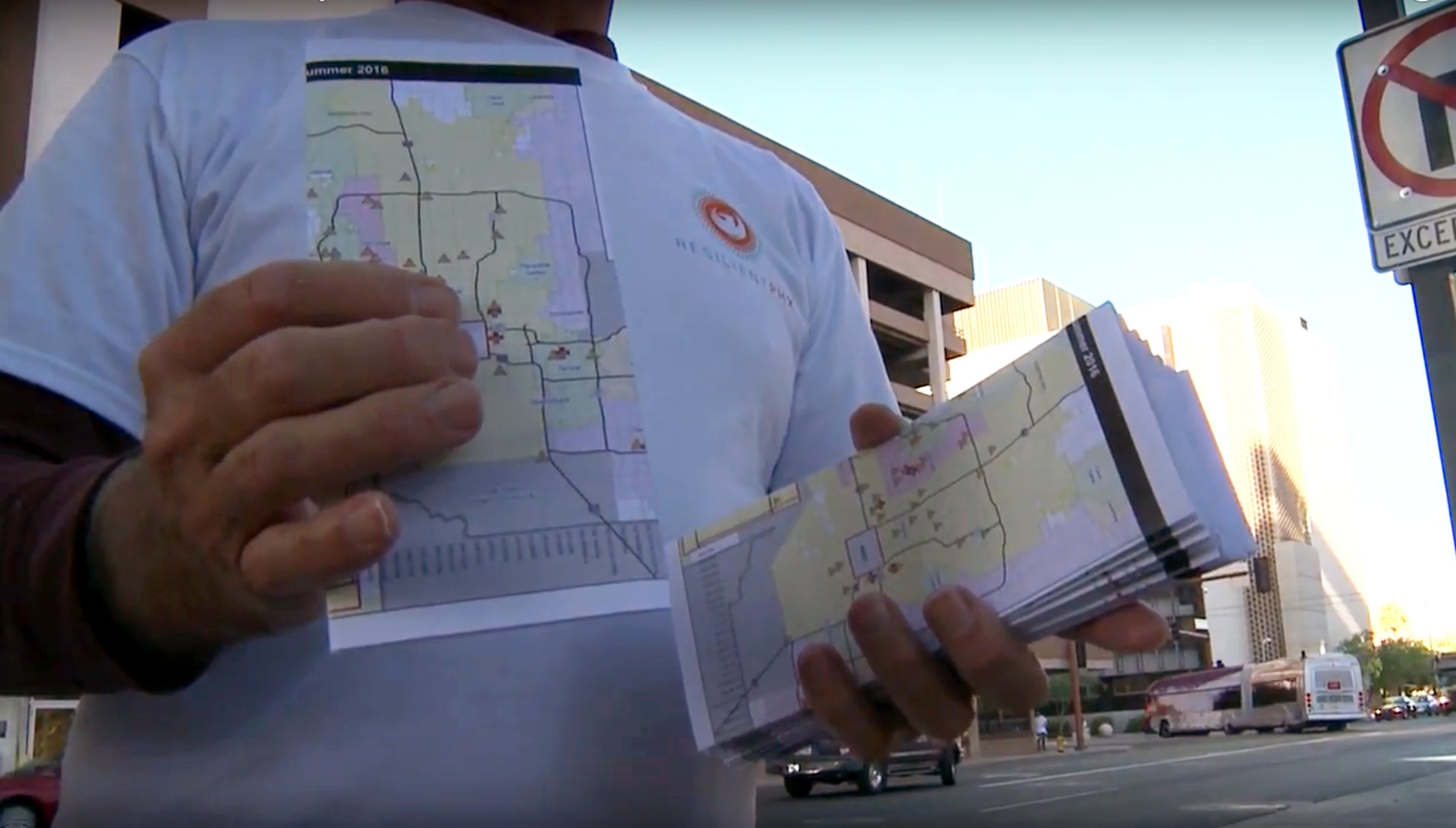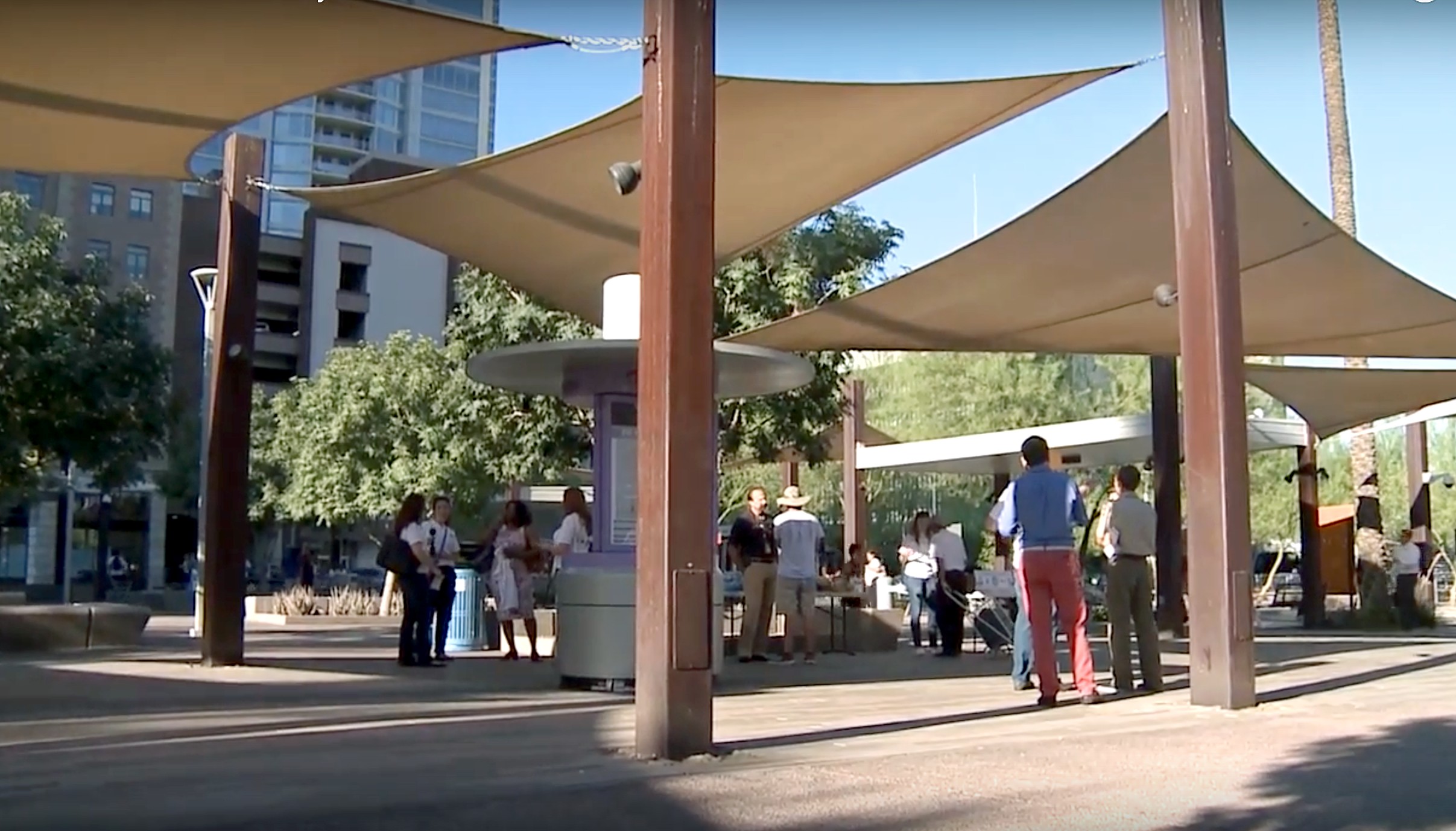Building Resilience in Phoenix, Arizona: a Team Effort to Keep Cool
The Cities of Service Resilience AmeriCorps program trains and supports AmeriCorps VISTA members to help communities prepare for catastrophic events and ongoing challenges. Serving in city halls, AmeriCorps members engage citizens and community partners to build and sustain resilience in vulnerable neighborhoods.
A
ttractive to many people because of its warm, dry climate, Phoenix has had a major increase in population over the last several years. Unfortunately, for more than three months of the year, the temperature can reach over 110 degrees and feel much hotter. The people who feel this heat the most are low-income and homeless residents, including anyone who depends on public transportation to get to and from work. Citizens who don’t know about the cooling stations or other available resources are at risk of suffering heat- related illness and, sometimes, death.
Phoenix is one of 10 U.S. cities selected to receive Cities of Service Resilience AmeriCorps members. The AmeriCorps members serve full time in city hall, engaging citizens in low-income areas to help increase the city’s resilience.
AmeriCorps Connect with Citizens to Learn How They Can Best Serve Phoenix
When they landed in Phoenix, Resilience AmeriCorps members Olivia Hutchins and Nick Roosevelt immediately began to learn about the different components of Phoenix’s heat mitigation strategy. They spent the first month meeting with elected officials, village planning committees, community groups, and city departments. They also did a tremendous amount of research on their own. As Roosevelt explains, “We started by talking to the community members, people in the field, and then doing research on our own to see how the city deals with heat. We were able to identify areas that we could enhance. One of those areas was getting the message out about cooling refuges and hydration stations.”
As part of their research, they learned about the Heat Relief Network. Coordinated by the Maricopa Association of Governments, the Heat Relief Network works with partners to help prevent heat- related deaths. For more than 10 years, the Network has coordinated water donations and cooling and hydration stations for vulnerable populations in the city.
Unfortunately, many of the residents that the Network aimed to serve did not know about the stations or where the closest ones were located. Different subgroups within the Network, from Arizona State University to NOAA, were focused on various elements of the program, but there was a need for a more organized strategy to ensure residents were aware of and able to locate the hydration and cooling stations.
“We have this opportunity where we can look at city programs and private programs, and then design our own program that would really bolster both. At the same time, we have the support of the city, which really helps us.”
— Olivia Hutchins, Resilience AmeriCorps Member
The AmeriCorps members’ unique position in city hall helped them formulate a strong plan to reach residents in need. As Hutchins explains, “We have this opportunity where we can look at city programs and private programs, and then design our own program that would really bolster both. At the same time, we have the support of the city, which really helps us.”
 Phoenix Mayor Greg Stanton meets with AmeriCorps members to discuss heat mitigation efforts. Photo Credit: Cities of Service
Phoenix Mayor Greg Stanton meets with AmeriCorps members to discuss heat mitigation efforts. Photo Credit: Cities of Service
City Uses Multi-Pronged Strategy to Publicize Cooling Stations
The AmeriCorps members decided to take a two-level approach to their plan: vastly expanding the number of people who know about the resources available in the short-term and securing advertising on and around public transportation to give that awareness long-term sustainability. “We focused on transit stations because we found that these were probably the best places to target our low-income population during their commute. We focused our efforts early in the morning, during commuter hours, at the biggest transit stations, especially stations that had a lot of connections,” says Roosevelt.
The AmeriCorps members met with Mayor Greg Stanton, who was very supportive of the plan and offered great direction, including marketing and branding ideas like the name “We’re Cool” and the idea to place stickers in the windows of participating businesses. They were also given access to many local government leaders. The We’re Cool initiative was born. “The ultimate goal of the We’re Cool initiative is to decrease heat-related illnesses that can lead to missed work and loss of a paycheck for low-income transit users,” says Phoenix Chief Service Officer and AmeriCorps member supervisor Michael Hammett.
Boy Scout and aspiring Eagle Scout Kaden Heywood joined the team to do the first round of outreach during three days in July. He recruited more than 40 volunteers to hand out 1,000 cooling station maps to riders at transit hubs. The AmeriCorps members worked with the Valley Metro public transit system to garner long-term support and secured advertisements on 500 buses and at metro stops along the routes of the most affected riders.
 A volunteer gets ready to hand out cooling station maps.
A volunteer gets ready to hand out cooling station maps.
 City residents visit one of the cooling stations. Photo Credit: City of Phoenix
City residents visit one of the cooling stations. Photo Credit: City of Phoenix
Support From Senior Officials Helps AmeriCorps Members Make Greater Impact
Roosevelt and Hutchins also coordinated with the city’s Communications Office to extend their reach. Multiple councilpersons, Vice Mayor Gallego, and Homeland Defense Bureau Chief Kevin Kalkbrenner joined the efforts. “None of our projects would’ve been successful, or would’ve even happened, if it weren’t for the team that we’re working with,” reports Hutchins. Local news media covered the outreach events, ensuring it wasn’t just the people who happened to be riding that day that would get the information. All of these efforts led to increased demand at a majority of the targeted cooling stations.
As Roosevelt describes, “Everybody has their own role to play in resilience. One of the things Chief Kalkbrenner had talked to us about was demystifying resilience within the city, and helping each department come to terms with what resilience means for them and figuring out what they can do.” In Phoenix, they now have a strong model of action to follow.
. . .
Cities of Service’s work is made possible with generous funding from Bloomberg Philanthropies. Resilience AmeriCorps is supported by The Rockefeller Foundation, the Corporation for National and Community Service, and Walmart Foundation.
